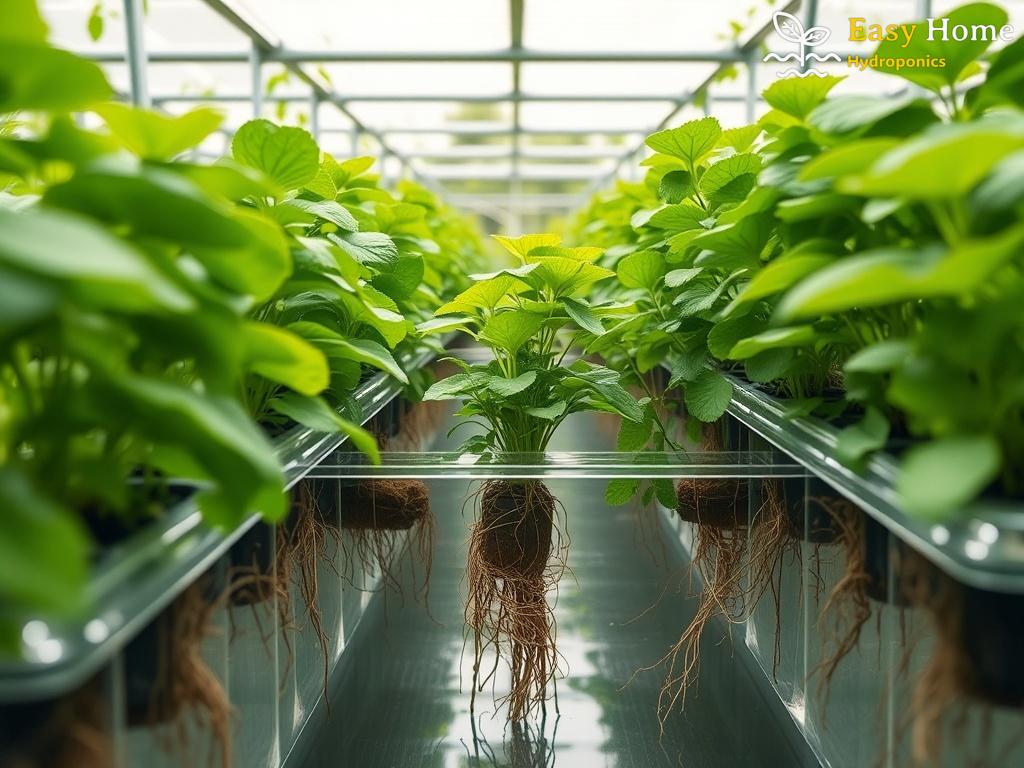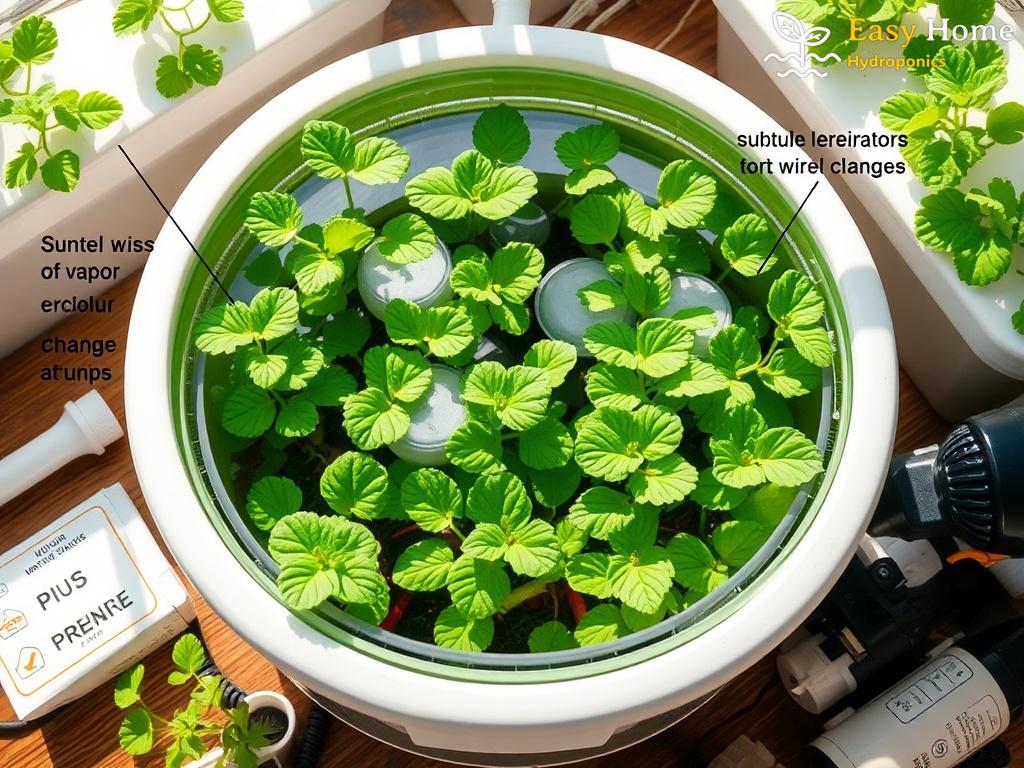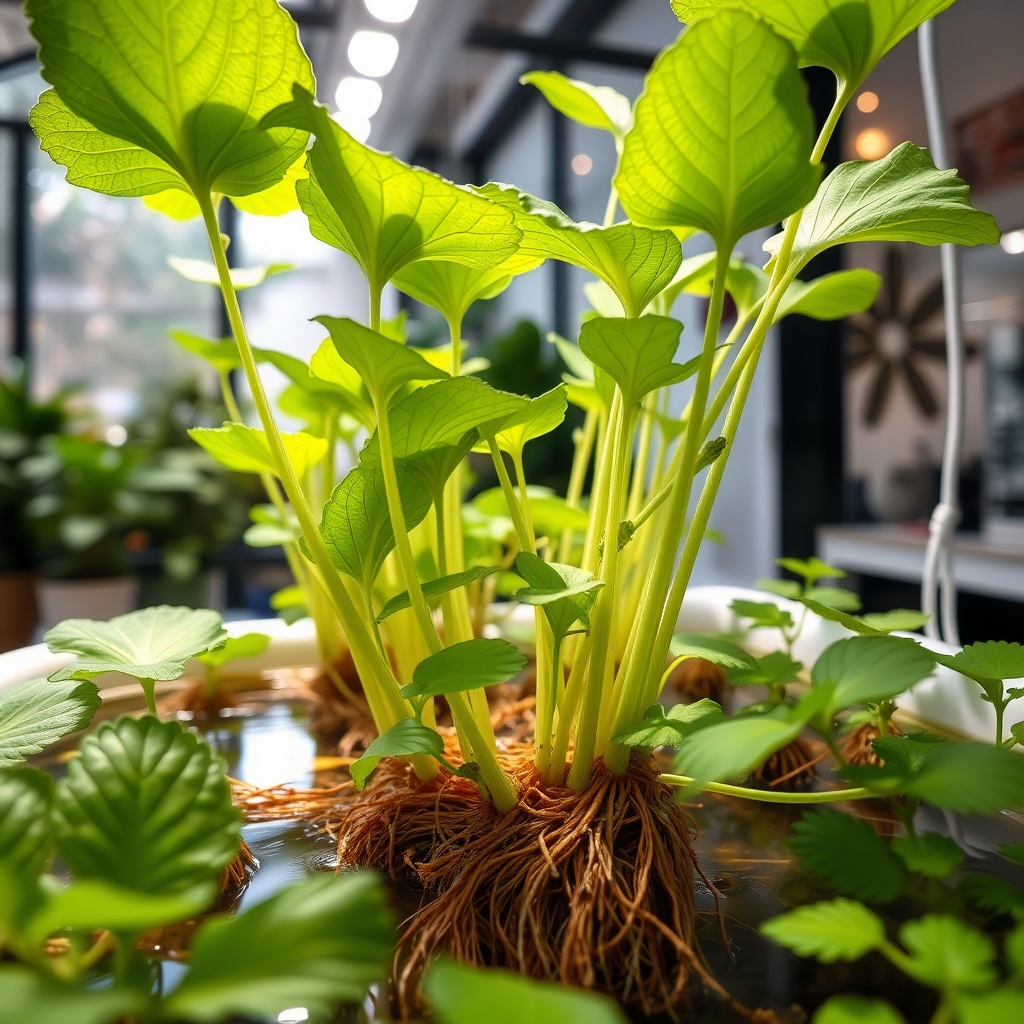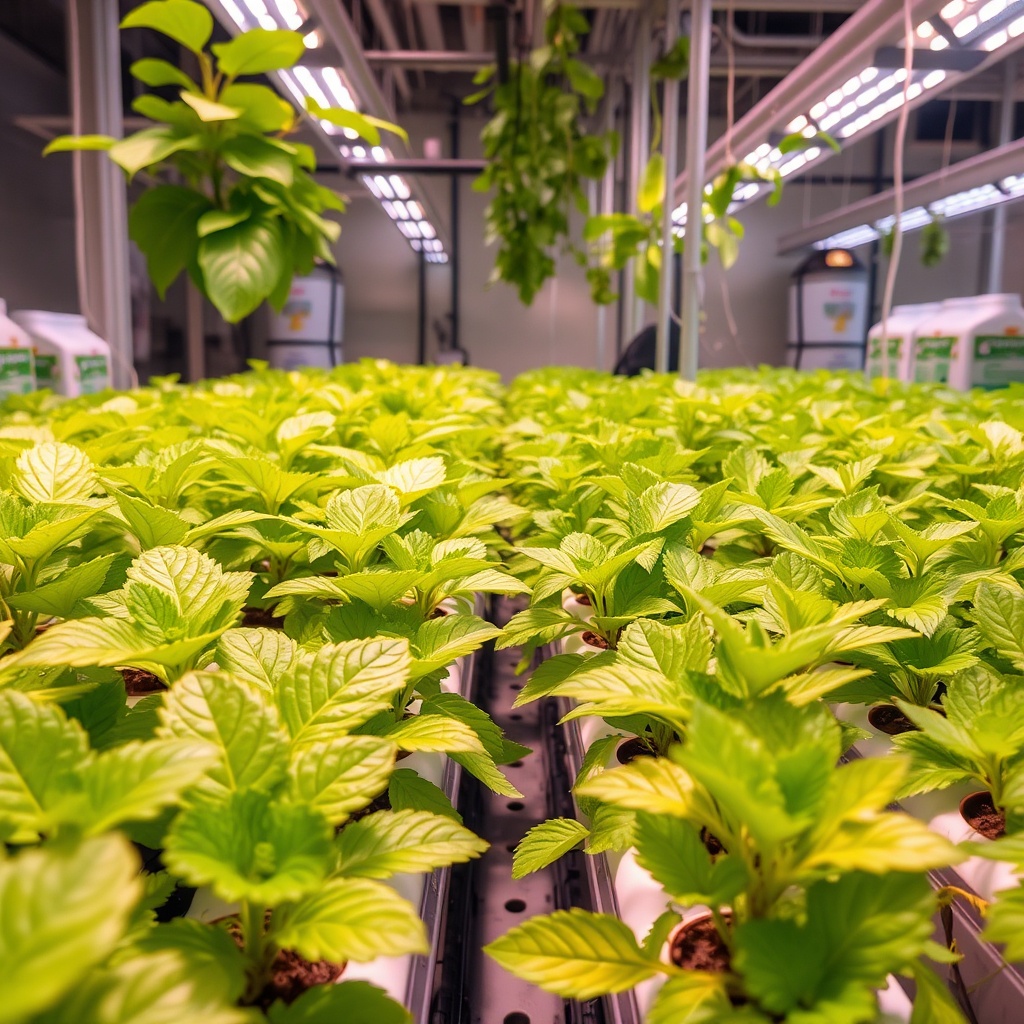Unmasking Rhizoctonia: Identifying Root Rot Symptoms

Rhizoctonia solani, a notorious fungal pathogen, is the culprit behind one of the most insidious threats to hydroponic systems: root rot. This uninvited guest thrives in moist environments, often leading to devastating effects on plant health. As hydroponics gain popularity for their efficiency and yield, recognizing the symptoms of Rhizoctonia root rot becomes crucial for any grower wishing to maintain a thriving garden.
Identifying root rot symptoms early can make all the difference between a flourishing crop and a failed harvest. The following table outlines the common symptoms associated with Rhizoctonia root rot:
| Symptom | Description |
|---|---|
| Discoloration | Roots may appear brown or black, indicating decay. |
| Wilting | Plants may show signs of wilting even with adequate moisture. |
| Stunted Growth | Overall growth slows down, leading to smaller plants. |
| Soft, Mushy Roots | Roots become soft and mushy, losing their firmness. |
| Foul Odor | A distinct, unpleasant smell can emanate from the root zone. |
Timely identification of these symptoms is paramount. The earlier a grower detects the onset of root rot, the more options they have to combat the issue. Implementing routine checks and fostering an environment that discourages fungal growth can significantly reduce the risk of a Rhizoctonia outbreak. Remember, prevention is always better than cure!
Preventative Measures: Shielding Your Hydroponic Garden
In the battle against Rhizoctonia root rot, prevention stands as the frontline defense for hydroponic enthusiasts. By implementing strategic measures, growers can create an inhospitable environment for this fungal foe while promoting a healthy, vibrant garden. Understanding the dynamics of Rhizoctonia and how to thwart its progression is key to safeguarding your plants.
One of the most effective ways to shield your hydroponic system from Rhizoctonia is to optimize the growing environment. This involves striking a balance between moisture, temperature, and airflow. Here are essential factors to consider:
- Moisture Management: Overly moist conditions are a breeding ground for Rhizoctonia. Ensure that your hydroponic setup has proper drainage and avoid overwatering.
- Temperature Control: Keeping temperatures within the optimal range for your plants will help discourage fungal growth. Regularly monitor and adjust as needed.
- Airflow Optimization: Good airflow around your plants can prevent humidity buildup. Consider using fans to enhance air circulation in your growing space.
Choosing plant varieties that exhibit resistance to root rot can significantly mitigate risks. By selecting resilient cultivars, you can enhance the likelihood of a successful harvest. Research and invest in strains known for their robustness against fungal pathogens, and consult with local agricultural extensions for suitable options.
Regular monitoring of your hydroponic system is essential to catch early signs of Rhizoctonia. Establish a routine that includes:
- Inspecting plants and root systems for discoloration or decay.
- Testing water quality to ensure proper pH and nutrient levels.
- Cleaning and sanitizing equipment to eliminate potential sources of infection.
By remaining vigilant and proactive, you can create a sanctuary that not only wards off Rhizoctonia but also promotes the overall health of your hydroponic garden. Prevention is not just a strategy; it is a commitment to the success of your growing venture.
Effective Treatment Strategies: Combatting Root Rot
When dealing with the menacing threat of Rhizoctonia root rot in hydroponics, growers must arm themselves with effective treatment strategies. Identifying the symptoms is just the beginning; once root rot has set in, prompt and decisive action is essential to safeguard your plants. Below, we explore various treatment avenues that can help eradicate this fungal invader and restore your hydroponic garden to health.
Chemical treatments have long been a go-to option for tackling root rot, but it’s essential to choose the right products tailored to combat Rhizoctonia. Fungicides specifically designed to target this pathogen can be highly effective when applied correctly. Make sure to follow the manufacturer’s instructions and consider the following:
- Application Timing: Apply fungicides at the first sign of root rot for the best results.
- Soil Drenching: Use a soil drench method to ensure thorough penetration into the root zone.
- Rotating Treatments: Rotate different fungicides to prevent resistance buildup.
For those who prefer a more environmentally friendly approach, biological control agents offer a viable alternative. These beneficial microorganisms can outcompete or inhibit the growth of Rhizoctonia, reducing its impact on your plants. Consider the following biological solutions:
- Trichoderma spp.: This fungus acts as a suppressor of harmful pathogens and can be introduced to your hydroponic system.
- Bacillus subtilis: Known for its ability to promote plant health while combating root pathogens, this bacterium can be an invaluable ally.
In the aftermath of a root rot incident, ensuring your plants receive adequate nutrition is crucial for recovery. Providing the right balance of nutrients can help plants bounce back and become more resilient to future fungal attacks. Focus on:
- Boosting Nitrogen Levels: A nitrogen-rich environment encourages healthy growth and new root development.
- Supplementing with Micronutrients: Elements like zinc and manganese can enhance plant vitality, fostering a stronger resistance to pathogens.
- Adjusting pH Levels: Maintaining optimal pH levels ensures nutrient uptake efficiency.
By exploring these effective treatment strategies, hydroponic growers can take proactive measures against Rhizoctonia root rot. The path to recovery involves a combination of chemical, biological, and nutritional interventions, each playing a critical role in restoring and revitalizing your hydroponic system.
Choosing the Right Hydroponic System: A Key to Prevention
When it comes to safeguarding your hydroponic system from the lurking threat of Rhizoctonia root rot, the choice of hydroponic setup can play a pivotal role. Not only does the right system facilitate optimal plant growth, but it also establishes an unfavorable environment for harmful pathogens. As growers delve into the world of hydroponics, understanding the various systems available can empower them to make informed decisions that bolster plant health and yield.
One of the primary considerations when selecting a hydroponic system is the method of water and nutrient delivery. Systems such as Nutrient Film Technique (NFT) and Deep Water Culture (DWC) can promote faster growth rates, but they may also create more moisture, which could inadvertently foster conditions favorable for Rhizoctonia. On the other hand, systems like Aeroponics, which allow roots to dangle in air and periodically mist them with nutrients, significantly reduce excess moisture and can deter the development of fungal diseases. This delicate balance between moisture retention and evaporation is crucial for preventing root rot.
In addition, the choice of growing medium is equally significant. While traditional soil is often a breeding ground for various pathogens, hydroponic systems utilize inert mediums such as coconut coir or perlite, which do not retain excessive moisture. These materials not only support root structure but also facilitate superior drainage. This means that when choosing your hydroponic system, considering the growing medium can make a substantial difference in managing water levels and reducing the risk of Rhizoctonia outbreaks.
Furthermore, the layout and design of your hydroponic garden can influence airflow and humidity levels. Systems that promote good air circulation, such as vertical gardens or those equipped with fans, help mitigate humidity build-up around the root zone. This is especially important in preventing fungal growth, as Rhizoctonia thrives in damp, stagnant environments. By investing in a hydroponic design that prioritizes airflow, growers not only enhance the health of their plants but also create an inhospitable habitat for pathogens.
Soil vs. Hydroponics: Understanding Disease Dynamics
The ongoing battle against Rhizoctonia root rot takes many forms, especially when comparing traditional soil-based cultivation to modern hydroponic systems. Each method has its unique set of challenges and advantages in managing this persistent pathogen. By delving into the dynamics of disease transmission and propagation in both environments, growers can better equip themselves to prevent and combat root rot effectively.
In soil-based gardening, the presence of Rhizoctonia is often a hidden threat. The pathogens can linger in the soil, waiting for the opportune moment to attack vulnerable root systems. This latent nature of soil-borne diseases means that growers must frequently contend with myriad issues, including soil health, moisture retention, and microbial balance. In contrast, hydroponics presents a different scenario. While the absence of soil can reduce the initial load of pathogens, the high moisture levels and nutrient-rich environments can create conditions ripe for Rhizoctonia outbreaks if not managed correctly.
Understanding the differences between these two cultivation methods is critical for effective disease management. Below is a list outlining key comparisons:
- Pathogen Reservoir: Soil acts as a reservoir for Rhizoctonia, making it difficult to eradicate once established. Hydroponics, while less prone to soil-borne pathogens, can still fall victim to waterborne spores.
- Moisture Control: Soil retains moisture, often leading to over-saturation and promoting fungal growth. Hydroponic systems require precise water management to avoid creating a favorable environment for Rhizoctonia.
- Nutrient Delivery: In soil, nutrients are released slowly, allowing for a more balanced microbial ecosystem. Hydroponics delivers nutrients directly to roots, which can expedite plant growth but may also lead to rapid disease spread if not monitored.
- Plant Health Monitoring: Soil-based systems can mask early signs of root rot due to the obscured root environment. Hydroponics allows for better visibility and quicker detection of issues.
- Environmental Control: Hydroponics provides growers with more control over environmental factors, such as pH and nutrient levels, that influence Rhizoctonia’s growth.
Ultimately, success in managing Rhizoctonia root rot lies in understanding the unique dynamics of both soil and hydroponic systems. Growers must be proactive, employing tailored strategies that consider the specific challenges of their chosen cultivation method. Whether it involves enhancing soil health through crop rotation and organic amendments or optimizing nutrient delivery and moisture levels in hydroponics, knowledge is power. By fostering a deeper understanding of these environments, hydroponic enthusiasts can not only prevent Rhizoctonia root rot but also cultivate a thriving, robust garden.




